Nestled in the rolling Sintra Mountains, the mysterious Capuchos Convent offers visitors a unique opportunity to uncover the secluded lives of Franciscan friars from the 16th century. Through a guided tour, guests can explore the convent’s intricate network of grottos, cells, and structures, learning about the friars’ ascetic lifestyle and their purported encounters with the supernatural. From the cultivation of medicinal plants to tales of mystical experiences, this hidden gem provides a captivating glimpse into a world seemingly untouched by the passage of time. What secrets lie within these ancient walls?
Key Points
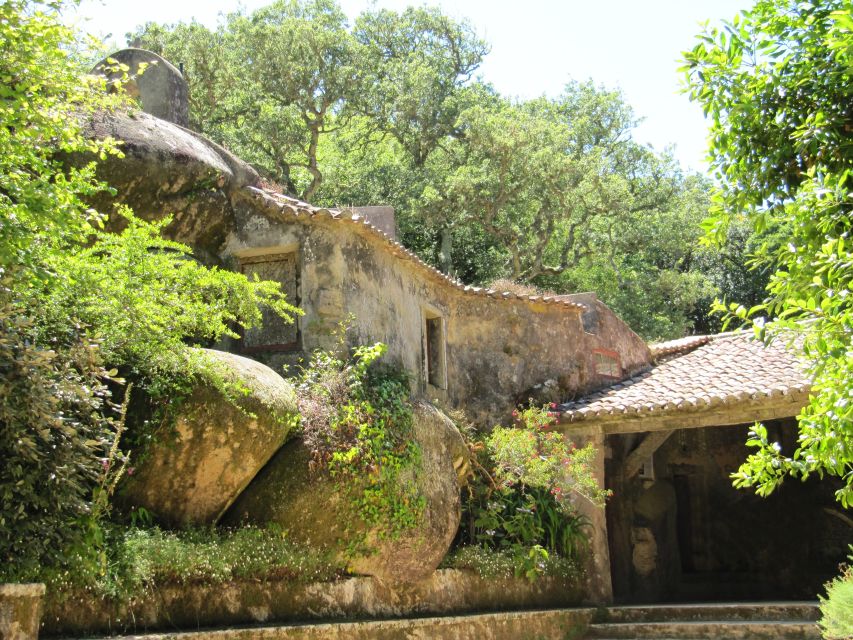
- Explore the secluded Capuchos Convent, nestled in the Sintra Mountains, and discover the austere lives of the Franciscan friars who sought refuge there in the 16th century.
- Explore the convent’s mystical past, as the guided tour uncovers tales of the friars’ encounters with the Devil and their visions of divine entities.
- Learn about the self-sustaining medicinal practices of the friars, who cultivated a variety of herbs and plants to produce remedies for various ailments.
- Understand the convent’s architectural features, where man-made and natural elements seamlessly integrate, creating a unique and immersive experience for visitors.
- Gain insight into the profound inner lives of the friars and the sense of the extraordinary that permeates the convent’s haunting spaces.
Overview of the Capuchos Convent
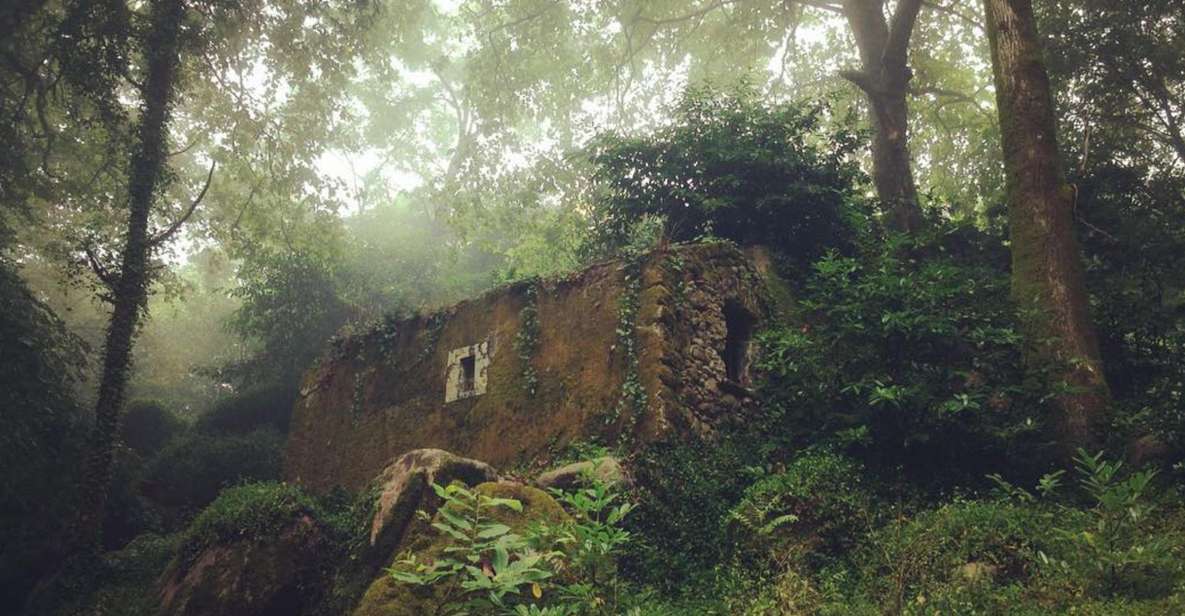
The Capuchos Convent, nestled deep within the Sintra Mountains, stands as a testament to the austere and mystical way of life embraced by its former Franciscan residents.
Constructed in the 16th century, this remote sanctuary offered a secluded refuge for the friars, who sought to escape the distractions of the outside world and dedicate themselves to a life of solitude, prayer, and contemplation.
Visitors to the convent can explore its mysterious grottos, cells carved into the rocks, and various structures that once housed the friars’ living quarters, workshops, and gardens.
Through this guided tour, guests can gain a deeper understanding of the convent’s history and the spiritual experiences of the men who once called it home.
You can also read our reviews of more guided tours in Sintra
Life in the Convent

Though shrouded in mystery, the daily lives of the Capuchos Convent’s Franciscan friars were governed by a strict regimen of prayer, labor, and solitary contemplation.
The friars rose before dawn to chant the Divine Office, spending hours in devotional activities. They toiled in the convent’s gardens, cultivating medicinal herbs and vegetables. Meals were simple, consisting of bread, vegetables, and an occasional fish.
Periods of silence and solitude, punctuated by communal prayer, defined the friars’ daily rhythm. Strict vows of poverty, chastity, and obedience underscored the ascetic lifestyle.
Even in death, the friars embraced simplicity, being buried in unmarked graves within the convent’s grounds. This severe, introspective existence exemplified the Franciscan order’s commitment to spiritual purification.
Medicinal Plants and Remedies
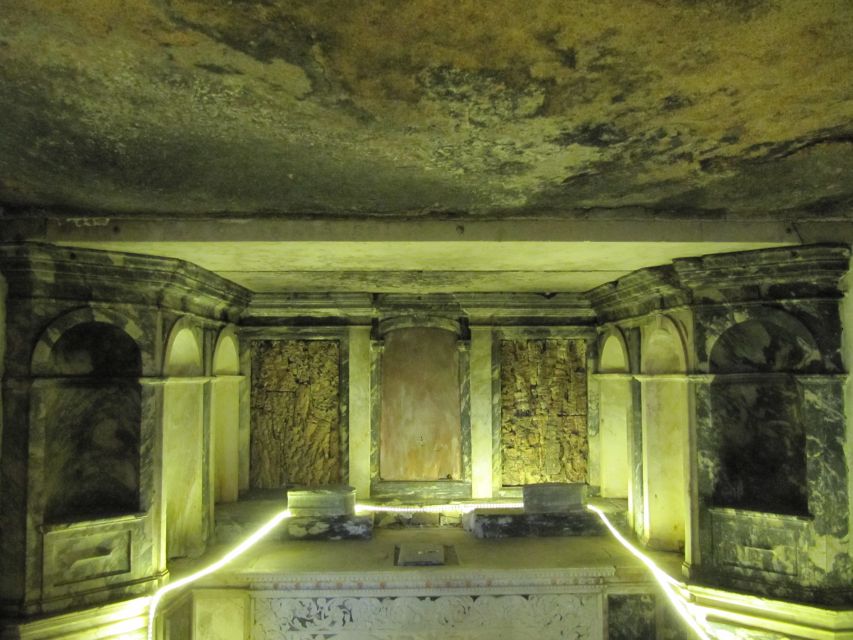
The Capuchos Convent’s friars cultivated a variety of medicinal herbs and plants within their secluded gardens, using them to produce remedies for various ailments. Herbs like sage, chamomile, and lavender were grown to treat common issues like colds, headaches, and digestive problems.
The friars also utilized more exotic plants, like mandrake and henbane, to create potent tinctures and ointments. These concoctions were believed to have mystical and curative properties, and the friars would sometimes use them in rituals and ceremonies.
The gardens provided a self-sustaining source of natural medicine, allowing the reclusive community to be largely self-sufficient in their remote mountain setting.
Mystical Experiences of the Friars
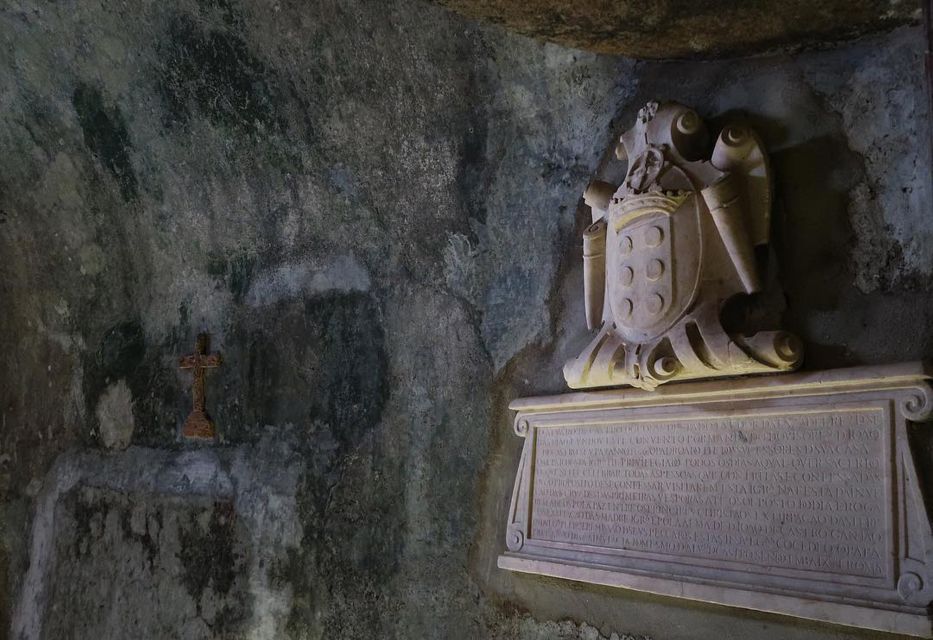
Amidst the secluded confines of the Capuchos Convent, the friars often recounted tales of mystical experiences and supernatural visitations.
They spoke of encountering the Devil himself, who’d allegedly appear in their cells and attempt to tempt them from their ascetic ways.
The friars also claimed to have visions of divine entities, like angels and saints, offering guidance and reassurance during their arduous lives of isolation and piety.
These mystical occurrences were seen as proof of the convent’s sacred purpose and the spiritual purity of its inhabitants.
Visitors today can still sense an air of the extraordinary within the convent’s haunting grottos and cloisters, hinting at the profound inner lives of the Capuchos friars.
More Great Tours NearbyDevil Visitations and Legends

According to accounts, the Capuchos friars often relayed chilling tales of the Devil himself infiltrating the convent’s sacred spaces.
They claimed the malevolent entity would materialize within their private cells, tempting the devout men to stray from their austere lifestyle and unwavering faith.
The friars believed the Devil would appear in various forms, sometimes as a sinister black dog, other times as a seductive woman.
These supernatural visitations, they said, were tests of their spiritual fortitude, meant to lure them away from their monastic devotions.
The friars feared these demonic incursions, yet they also saw them as opportunities to prove their piety and loyalty to God.
Architectural Features of the Convent
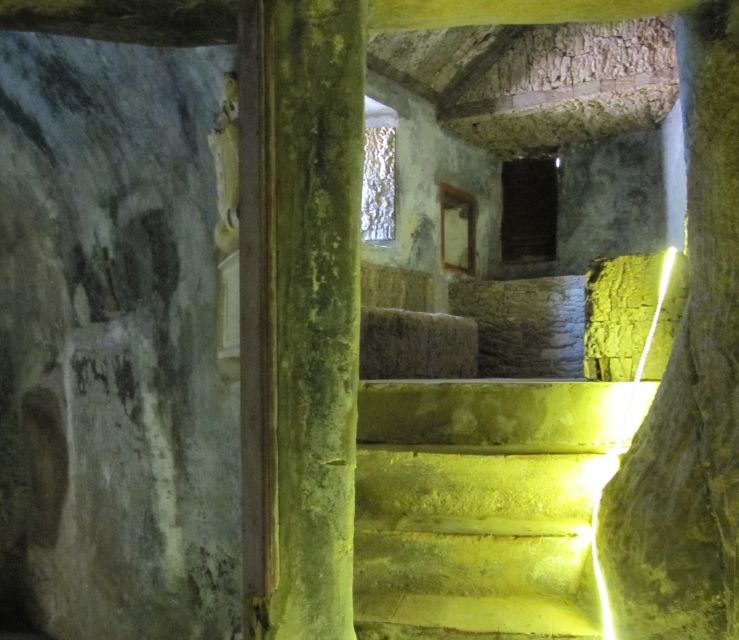
Nestled within the verdant Sintra Mountains, the Capuchos Convent’s architecture reflects the austere, contemplative lifestyle of its Franciscan inhabitants.
Carved directly into the rocky terrain, the convent’s cells, grottos, and passageways seamlessly integrate with the natural landscape, creating a harmonious fusion of man-made and natural elements.
Strict adherence to simplicity and functionality defined the design, with few decorative flourishes beyond the essential religious iconography.
The architectural features of the Capuchos Convent include:
- Compact, minimalist cells carved into the rock, providing isolation and solitude for the friars
- Interconnected network of tunnels and pathways allowing the friars to navigate the complex without exposure to the outside world
- Carefully curated medicinal gardens, where herbs and plants were cultivated for the convent’s self-sustaining needs
Guided Tour Itinerary and Highlights
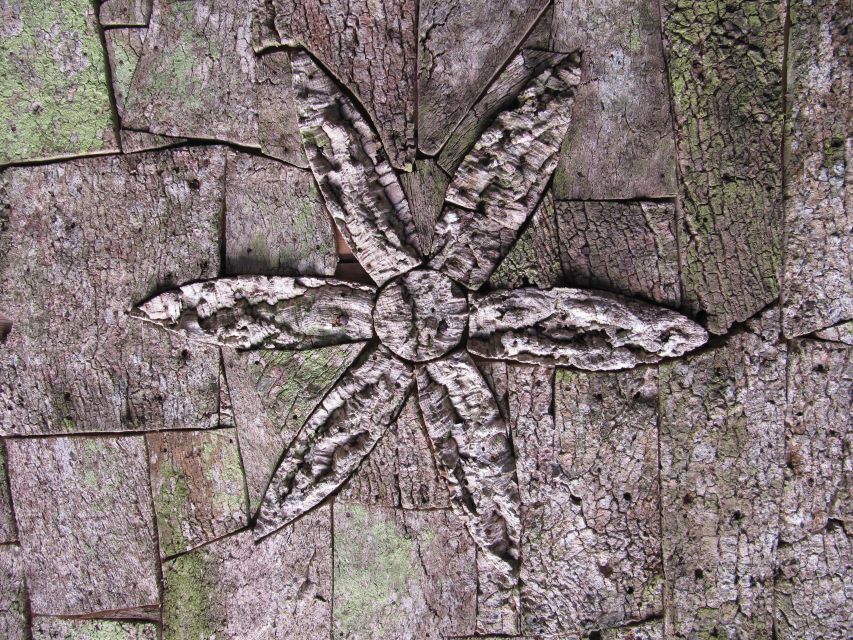
The guided tour of the Capuchos Convent takes visitors on a captivating journey through the convent’s storied past, unveiling the unique architectural features and the intriguing lives of its Franciscan residents.
Guided by a skilled historian, the tour explores the mysterious grottos and cells carved into the surrounding rocks, offering a glimpse into the friars’ ascetic lifestyle and their mystical experiences.
Visitors will learn about the strange habits and rituals that were practiced within the convent walls, including the processing of medicinal plants.
The tour also delves into the tales of the Devil’s purported visits, adding an air of mysticism to the proceedings.
Practical Information and Logistics
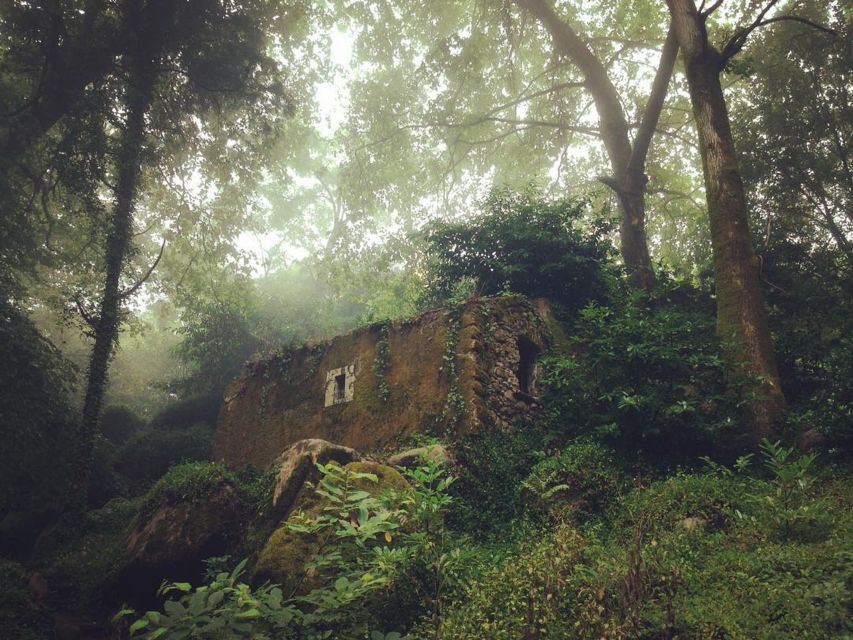
How long does the guided visit to the Capuchos Convent last? The tour runs for approximately 5 hours, with pick-up and drop-off at the Sintra train station.
The convent visit isn’t suitable for people with mobility issues or wheelchair users, so guests should keep this in mind when booking.
The tour includes:
- Entrance ticket to the Convent
- Transportation from the Sintra train station to the Convent and back
Cancellation is free up to 24 hours in advance, providing flexibility for participants.
The guided visit offers an immersive experience exploring the mysterious Capuchos Convent and learning about its fascinating history and the peculiar habits of its former residents.
Frequently Asked Questions

Can I Take Photographs Inside the Convent?
Yes, visitors can take photographs inside the Capuchos Convent. The convent’s guidelines allow photography, though flash use may be restricted to preserve the historic site’s ambiance and delicate materials.
Is the Tour Wheelchair Accessible?
The tour is not wheelchair accessible, as the knowledge states it’s "not suitable for people with mobility impairments or wheelchair users." The convent has features that make it challenging for those with mobility issues to navigate.
What Is the Dress Code for the Tour?
The tour doesn’t have a strict dress code, but visitors should wear comfortable, weather-appropriate clothing and sturdy shoes, as the Capuchos Convent site involves walking on uneven terrain. Light layers are recommended due to the varying temperatures.
Can I Bring My Own Food and Drinks?
Guests are allowed to bring their own food and drinks on the tour. However, they should be mindful of the tour’s duration and the convent’s rules regarding consumption within the premises.
Is There a Gift Shop at the Convent?
Yes, there is a small gift shop located on the premises of the Capuchos Convent. Visitors can browse and purchase souvenirs, religious items, and locally-made products related to the convent’s history and the Sintra region.
Recap
The Capuchos Convent offers a unique glimpse into the ascetic lives of 16th-century Franciscan friars. Visitors can explore the convent’s mysterious grottos, cells, and structures, learning about the cultivation of medicinal plants, the friars’ mystical experiences, and the convent’s unique architecture.
The guided tour provides a captivating insight into the religious and spiritual aspects of this historic site, making it a must-visit destination for those intrigued by the region’s rich history.
You can check availability for your dates here:More Guided Tours in Sintra
More Tour Reviews in Sintra
- PRIVATE TOUR WINE TASTING QUINTA BACALHÔA & JOSÉ MARIA FONSECA (Setubal Region)
- ÉVORA CARTUXA WINE TASTING PRIVATE TOUR (Tasting of 3 selected wines)
- Private Tour Coimbra E Aveiro
- 2 Tours Private / Tour SINTRA / Second Day Tour LISBON
- Sintra Half-Day Private Tour by TUK TUK
- Taste of Sintras Wonders Wine & Tapas Tasting Private Tour
Not for you? Here's more nearby things to do in Sintra we have reviewed
- PRIVATE TOUR WINE TASTING QUINTA BACALHÔA & JOSÉ MARIA FONSECA (Setubal Region)
- ÉVORA CARTUXA WINE TASTING PRIVATE TOUR (Tasting of 3 selected wines)
- Private Tour Coimbra E Aveiro
- 2 Tours Private / Tour SINTRA / Second Day Tour LISBON
- Sintra Half-Day Private Tour by TUK TUK
- Taste of Sintras Wonders Wine & Tapas Tasting Private Tour
- Pena Palace and Park Tickets
- 2 Tours Private / Tour FÁTIMA Second day Tour SINTRA
- Full Day Shared Tour of Sintra, Cabo da Roca and Cascais
- Pena Palace and Park Entry Tickets in Sintra
- Iconic Sintra: Quinta da Regaleira, Cabo da Roca, Cascais
- From Lisbon: Algarve Private Tour to Portimao, Lagos and Sagres
